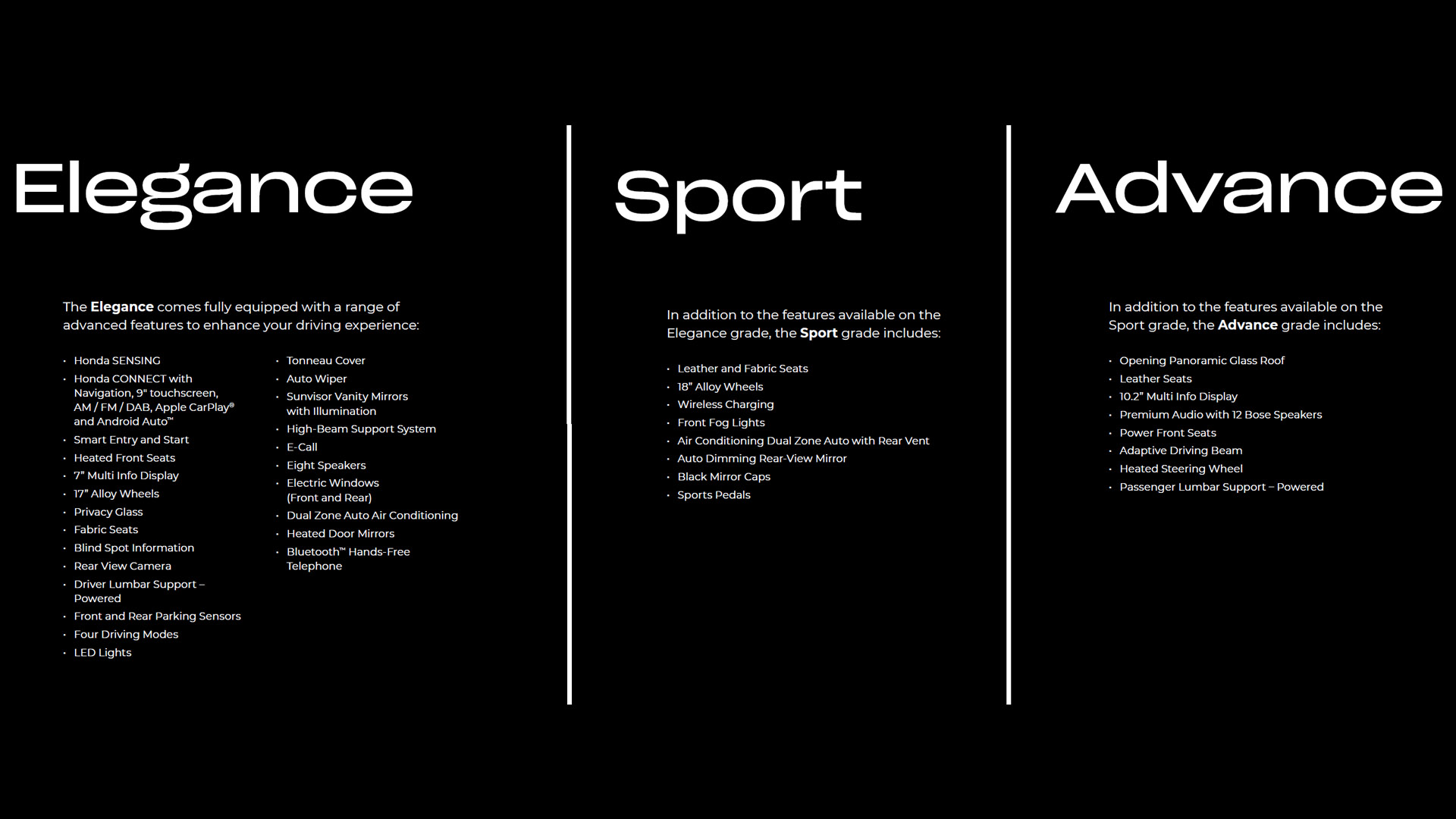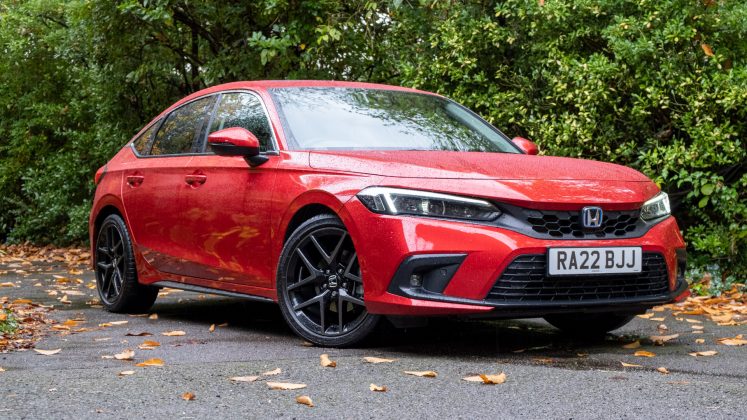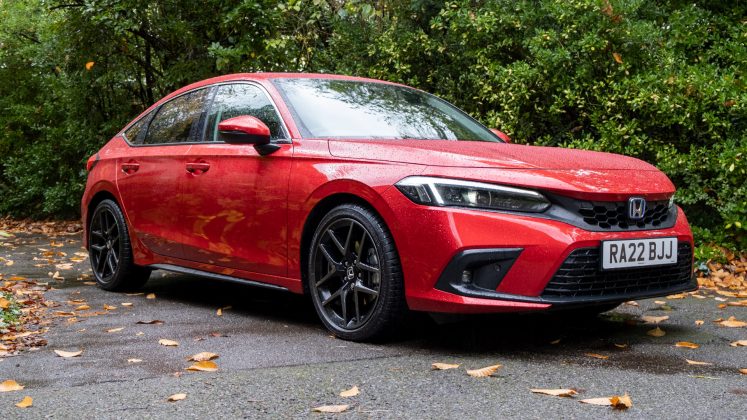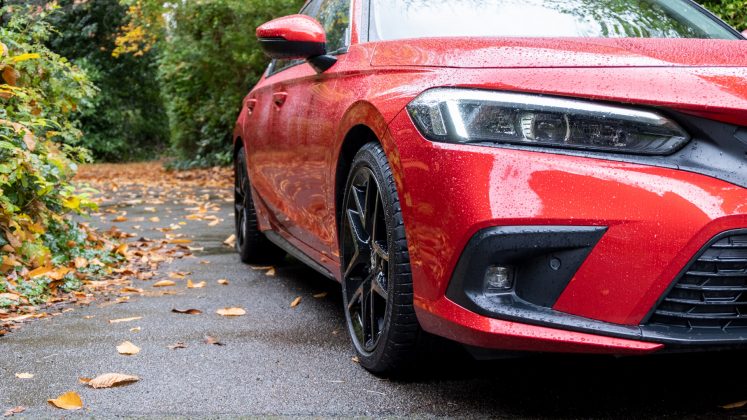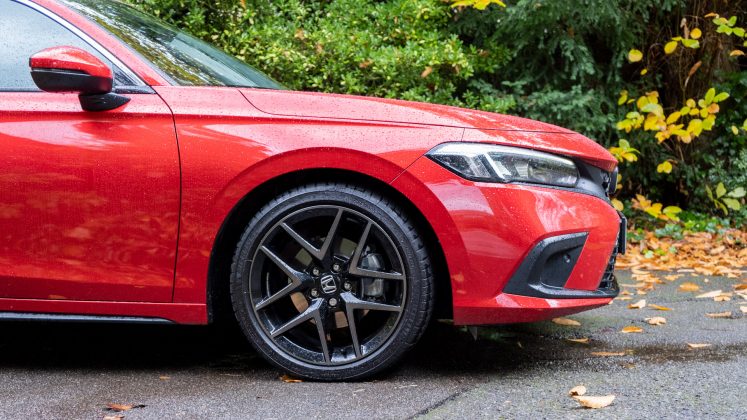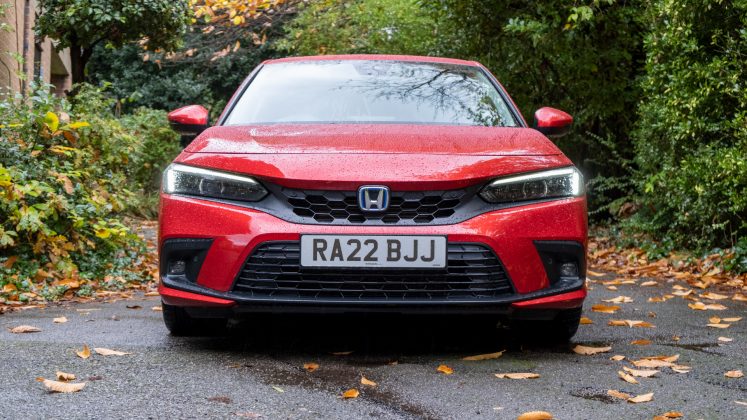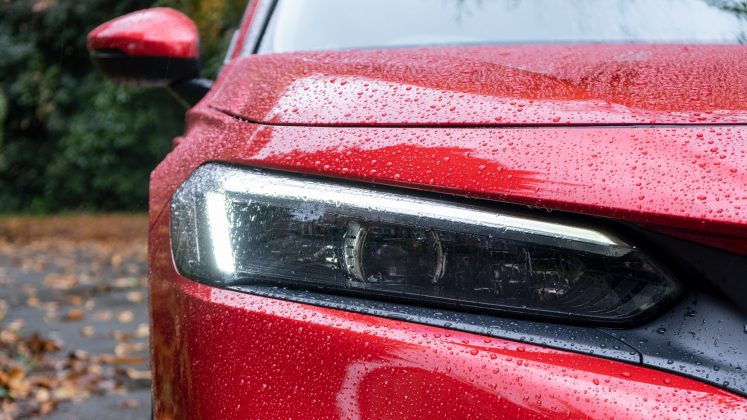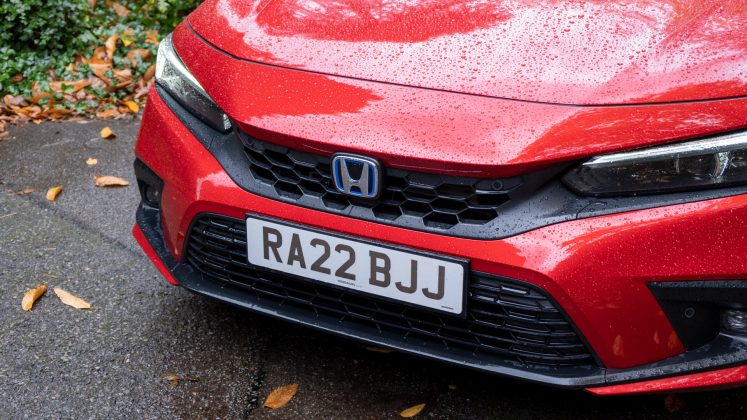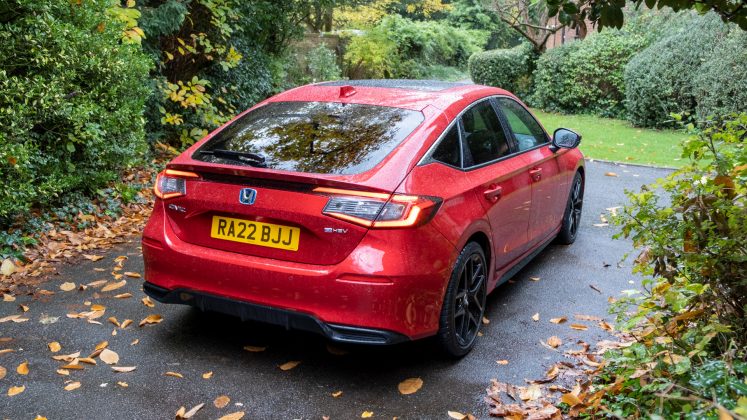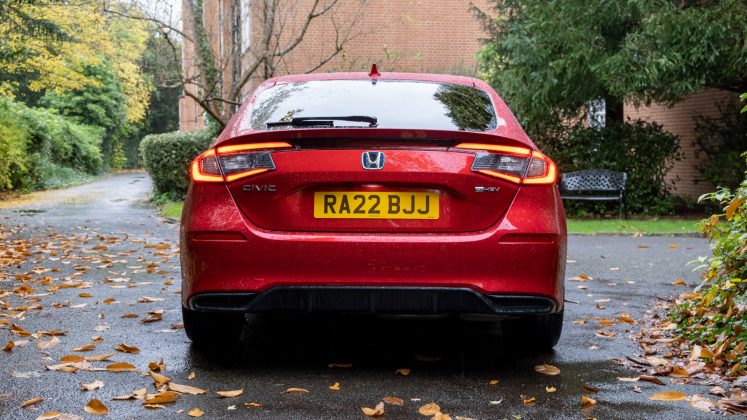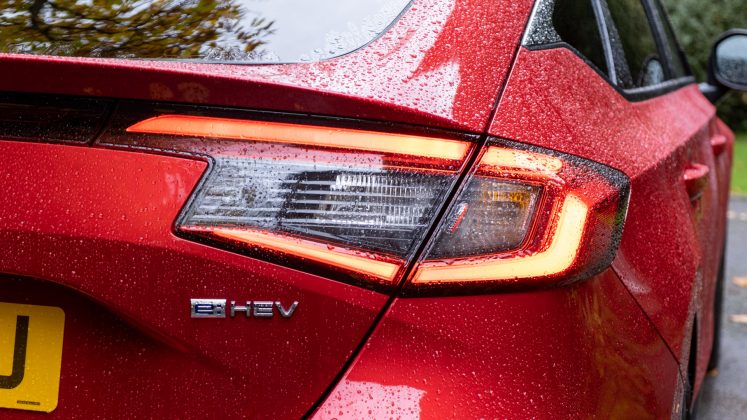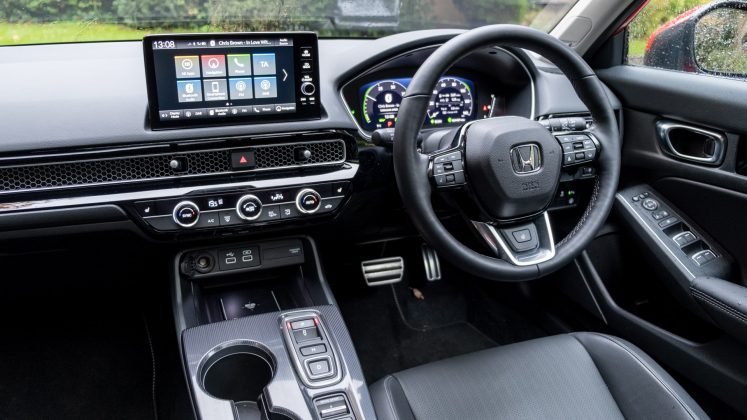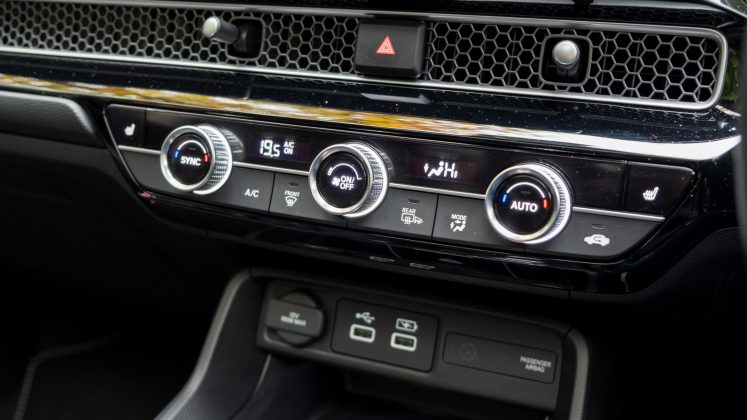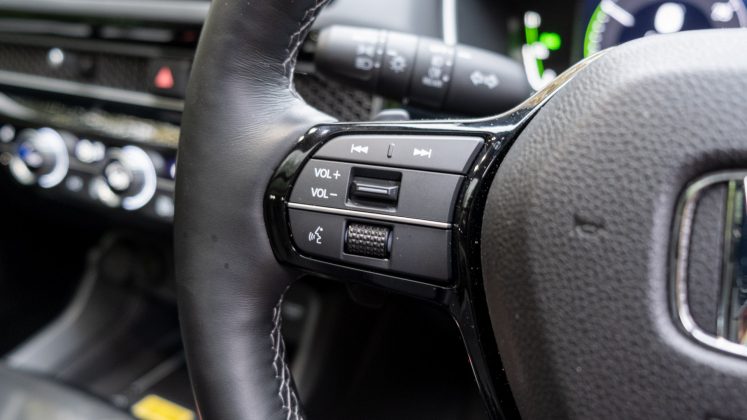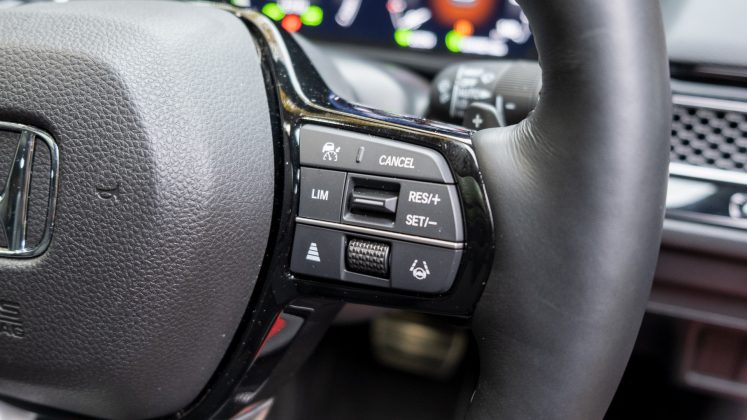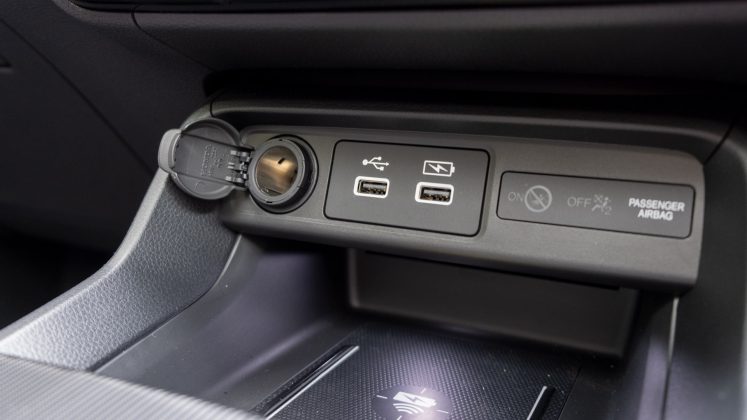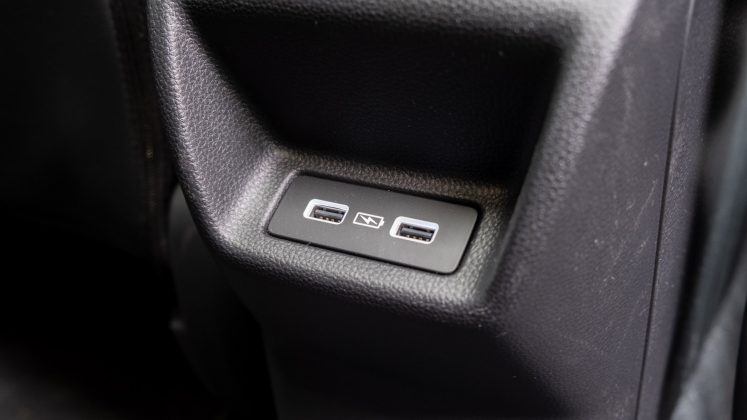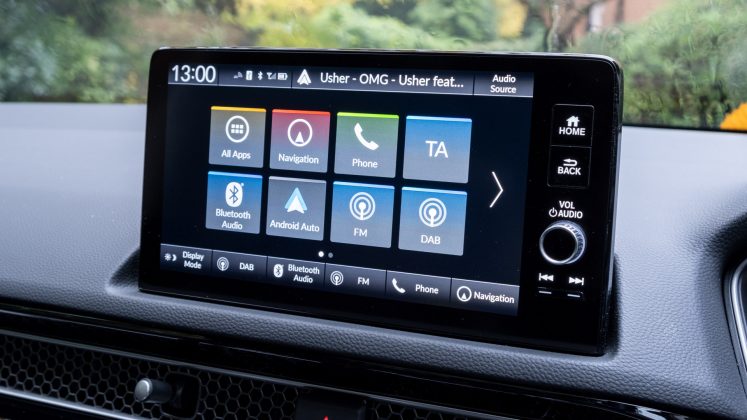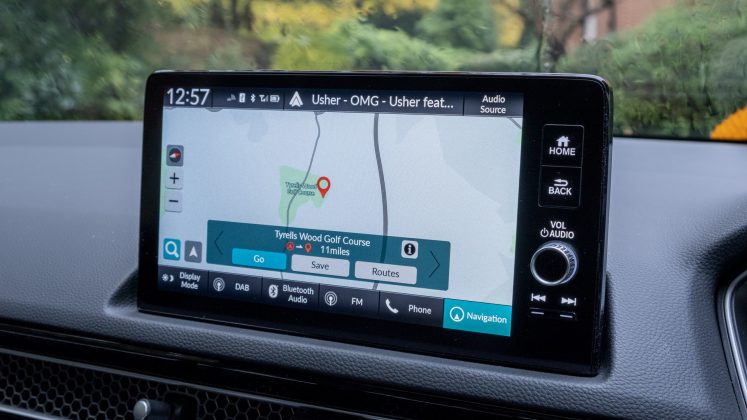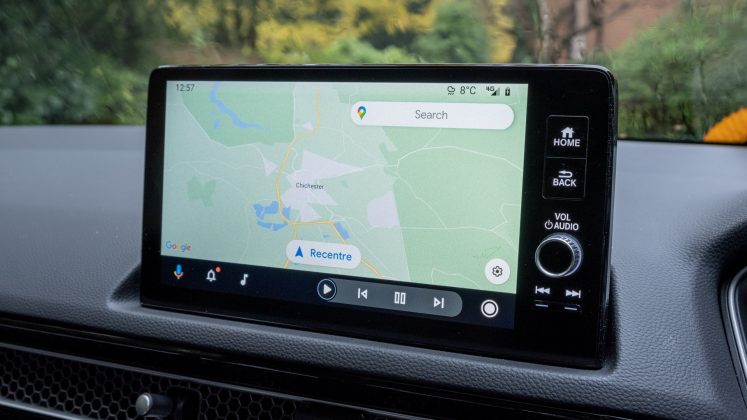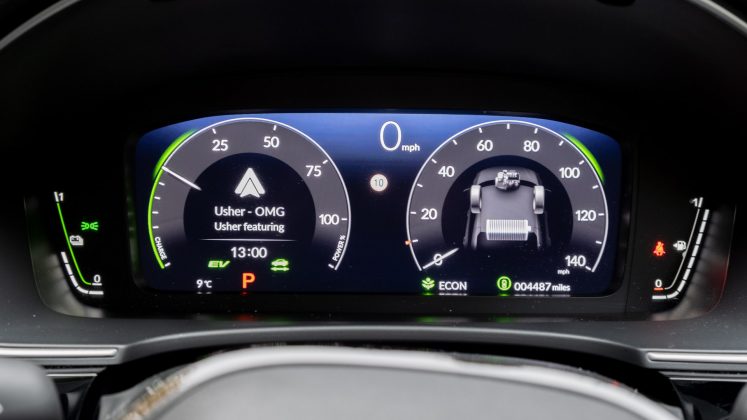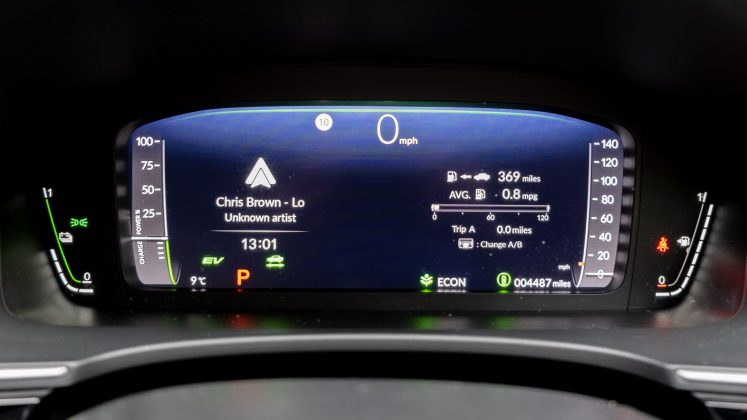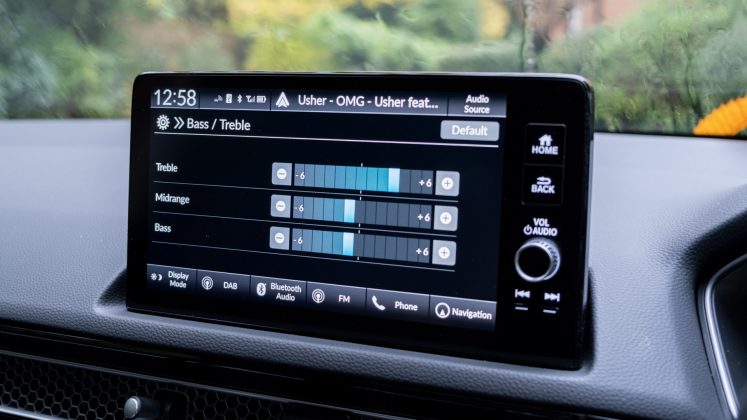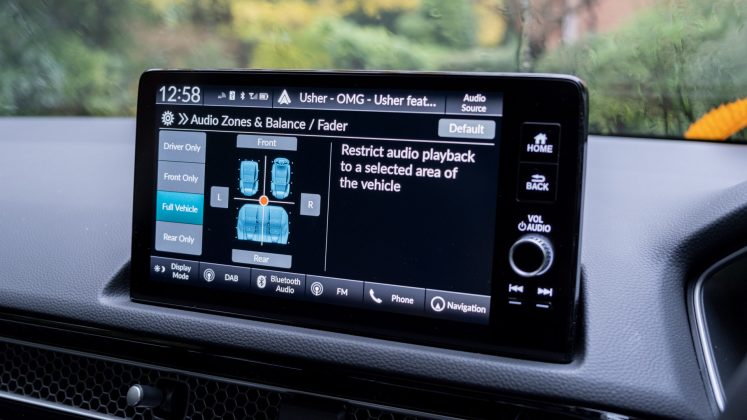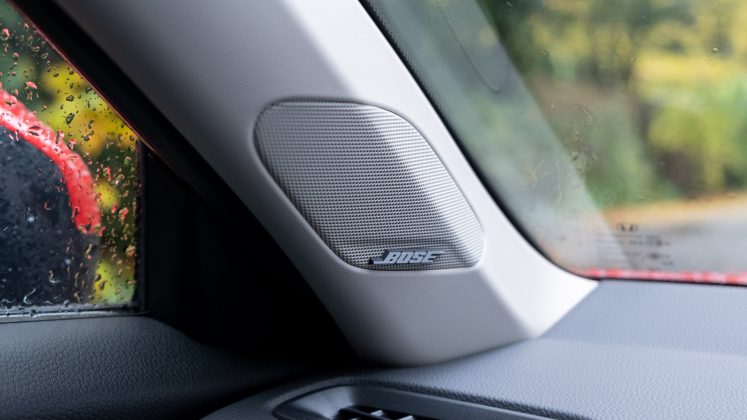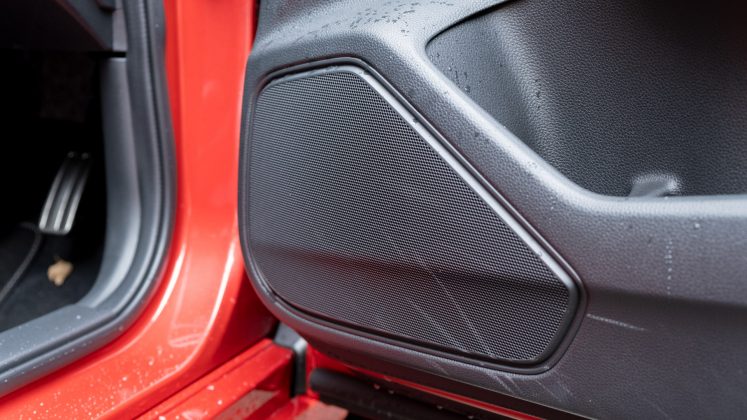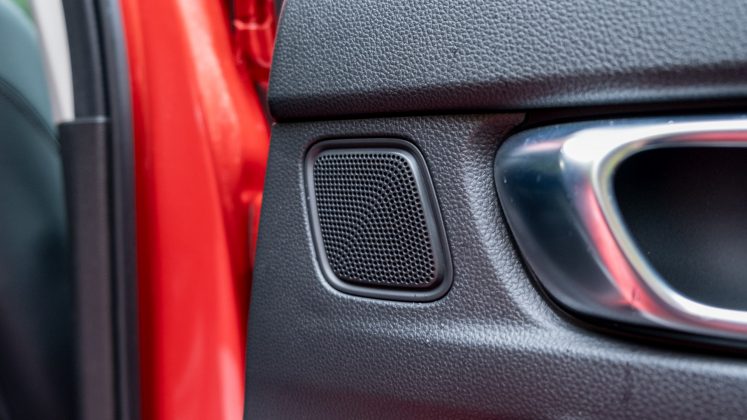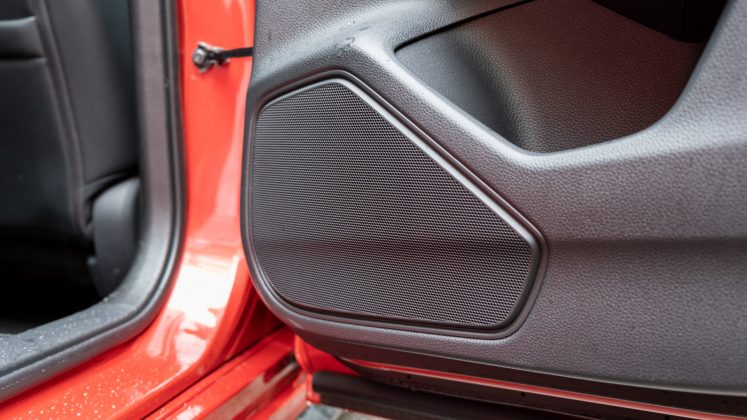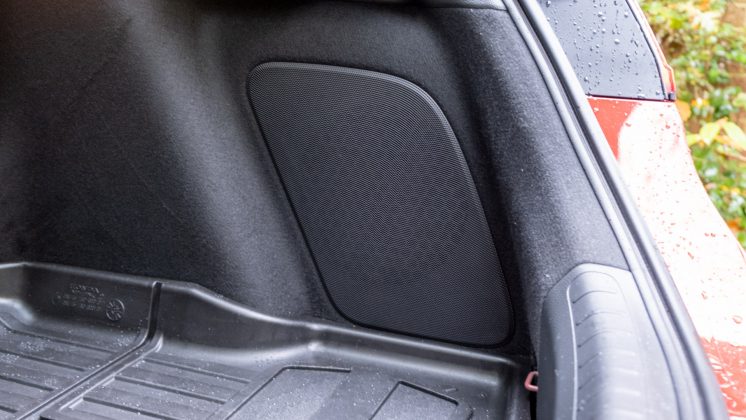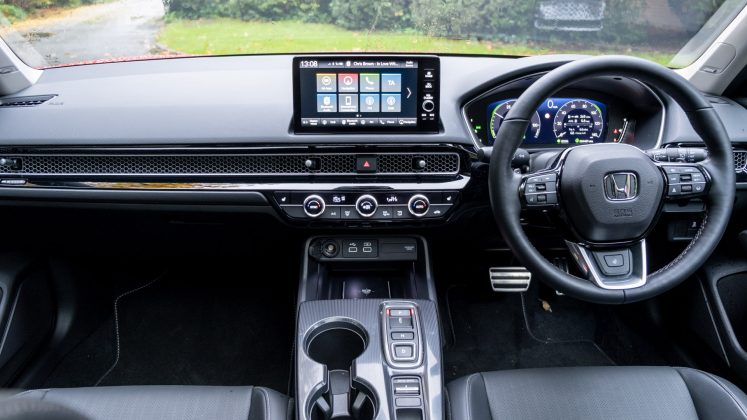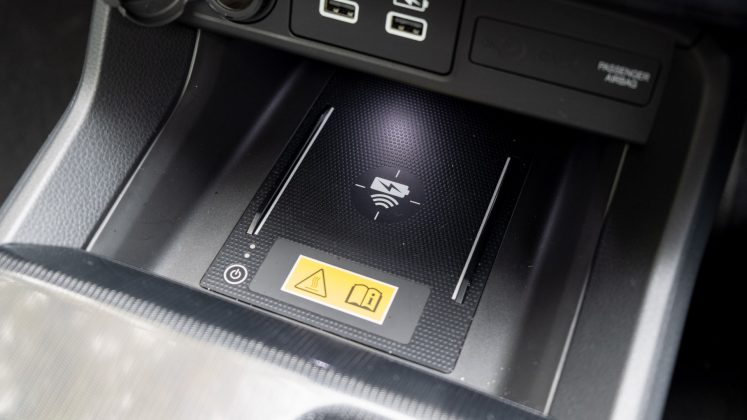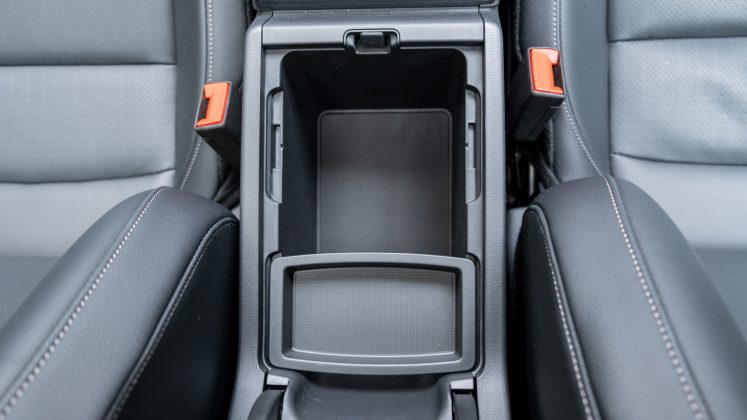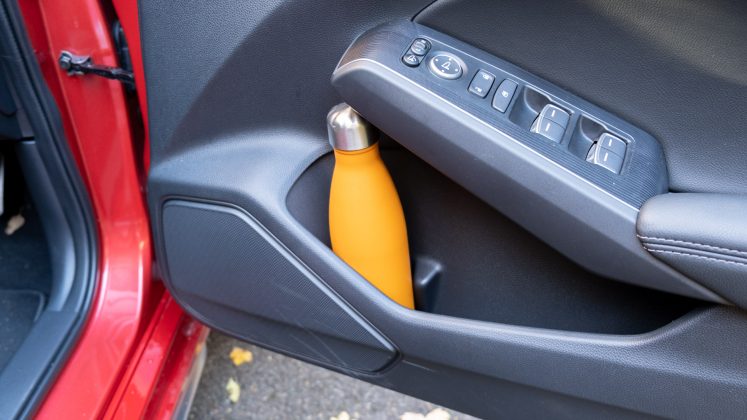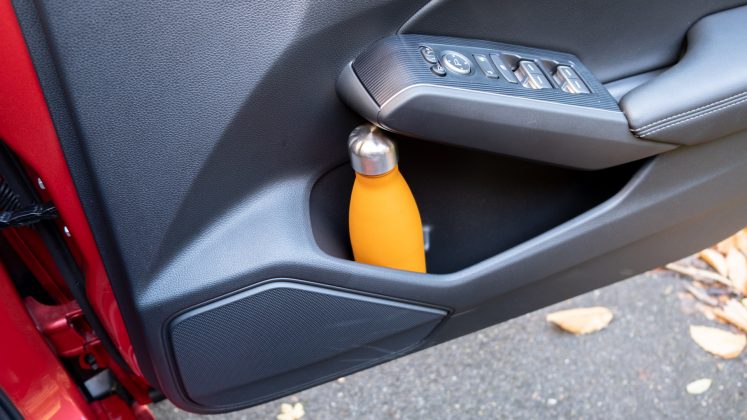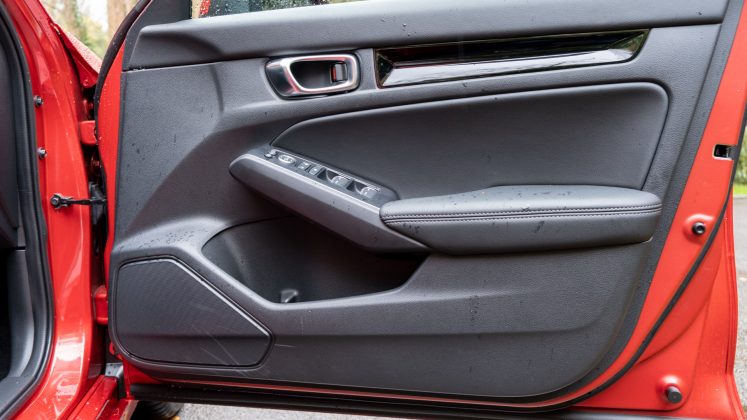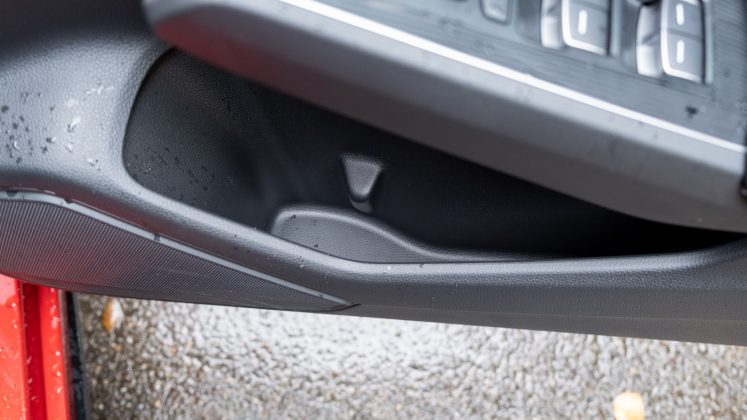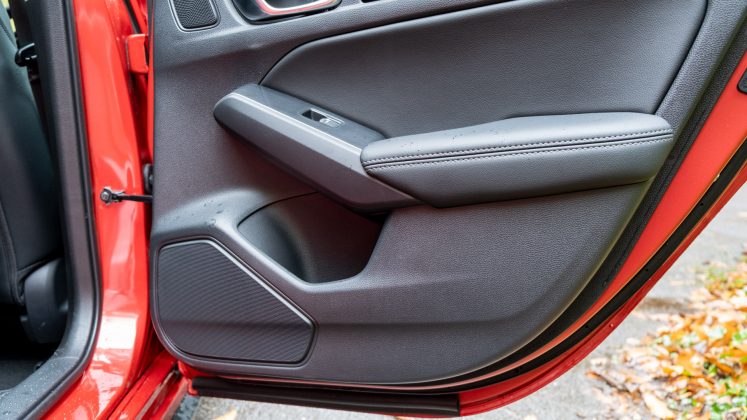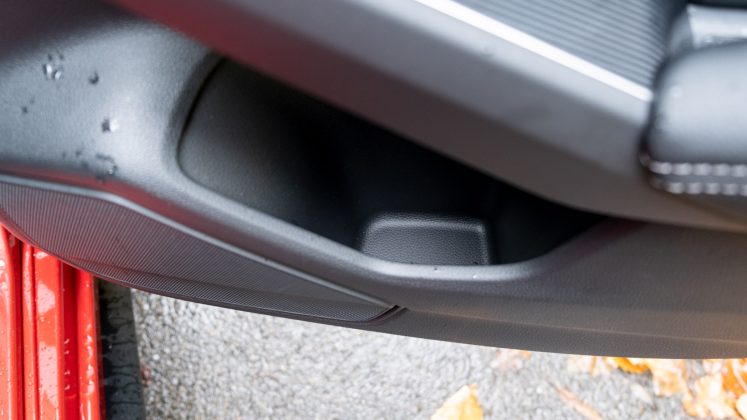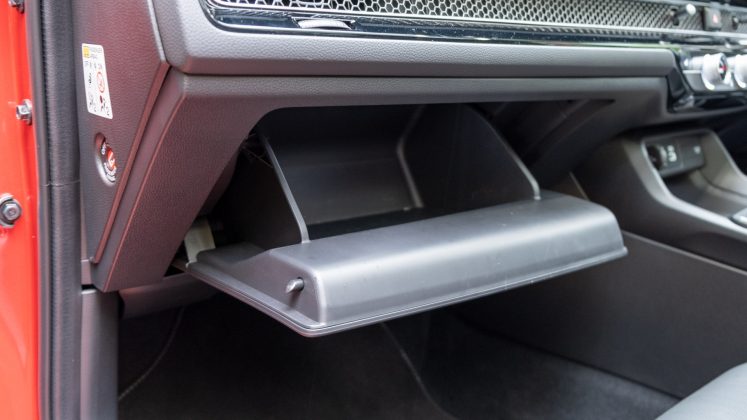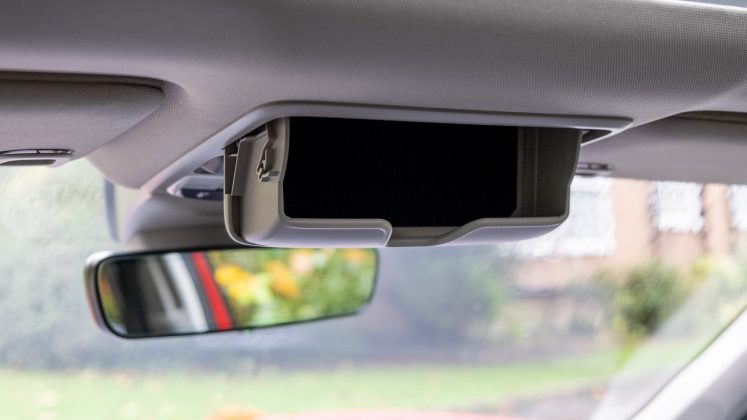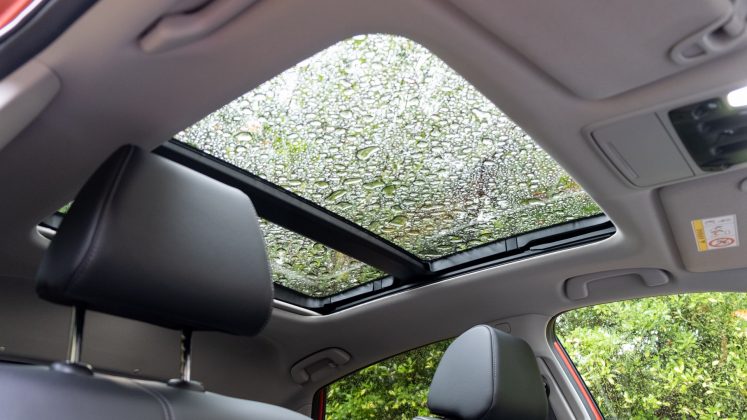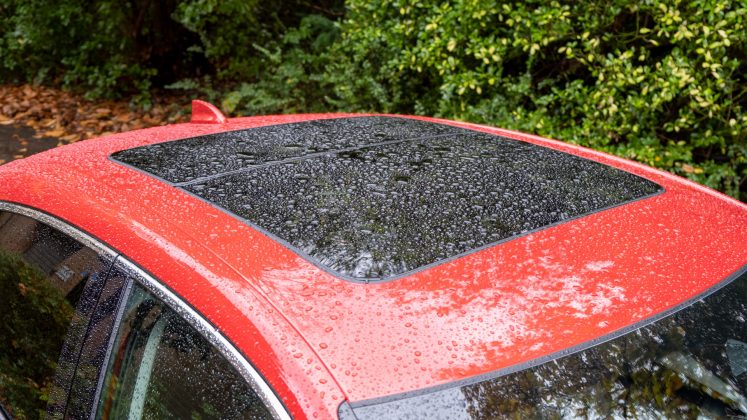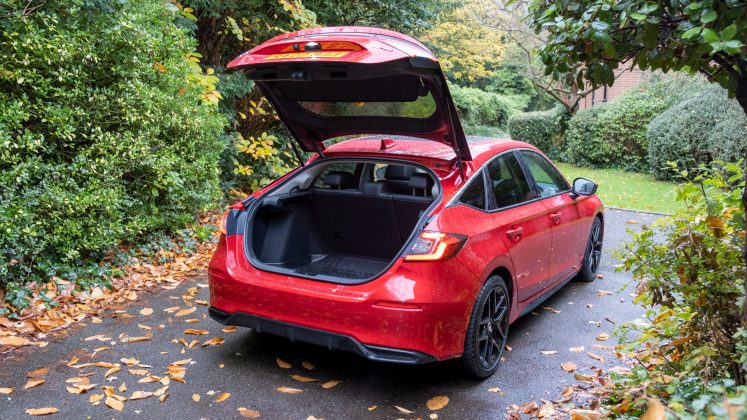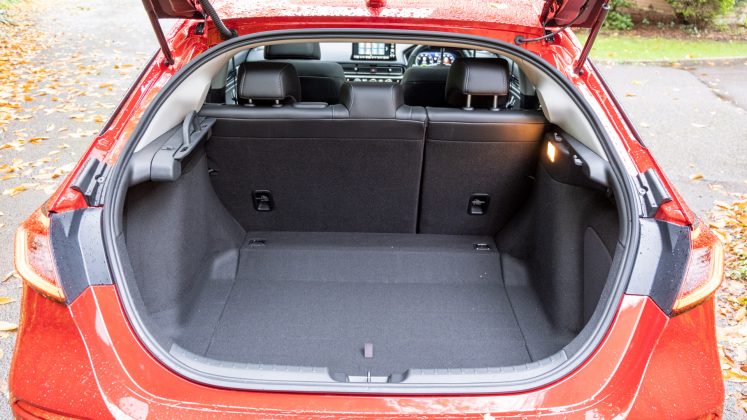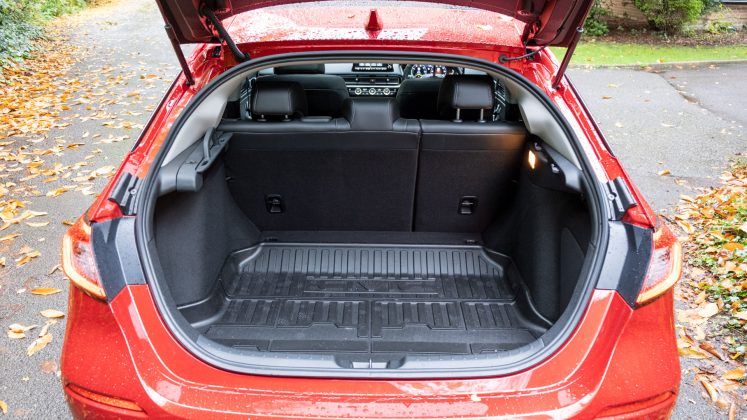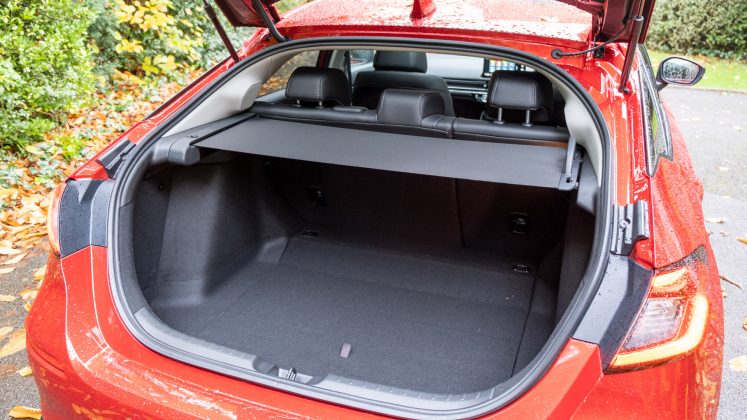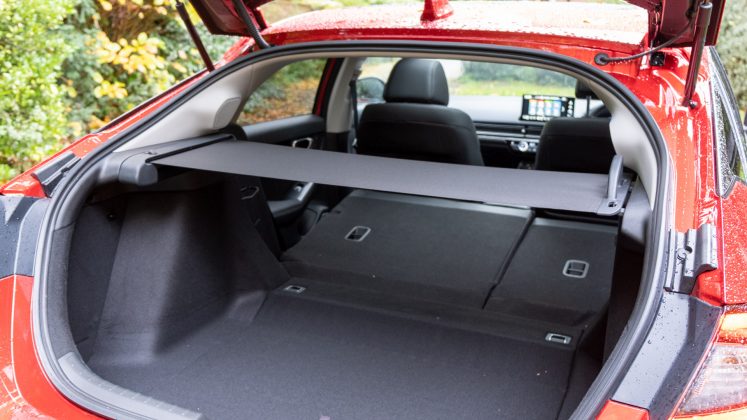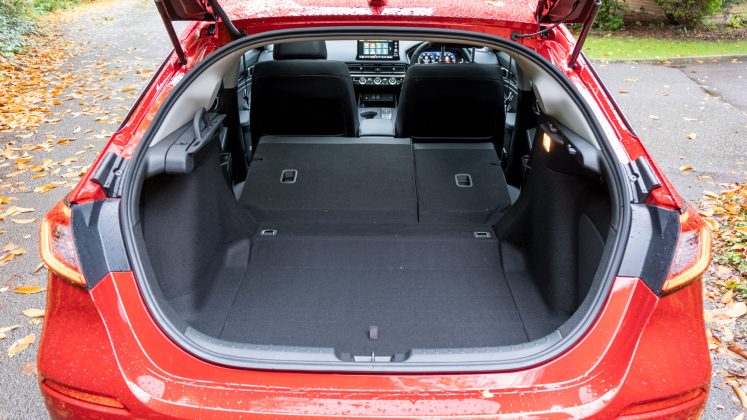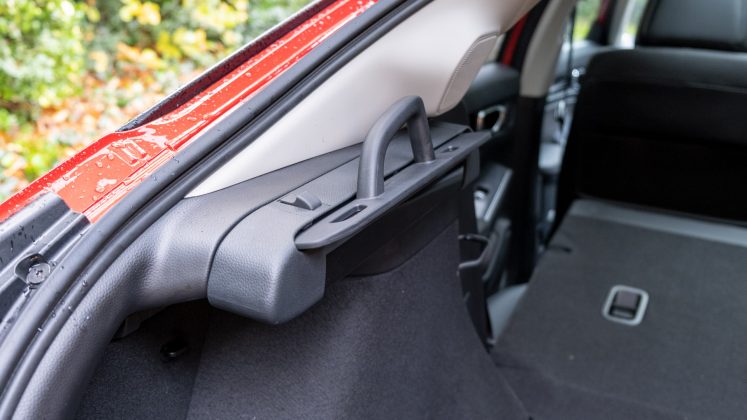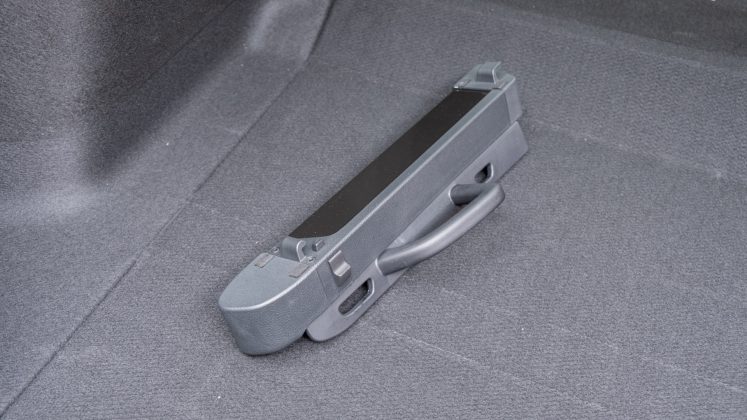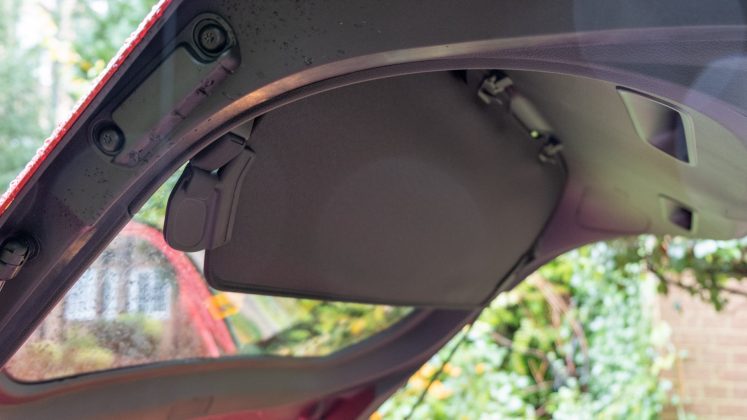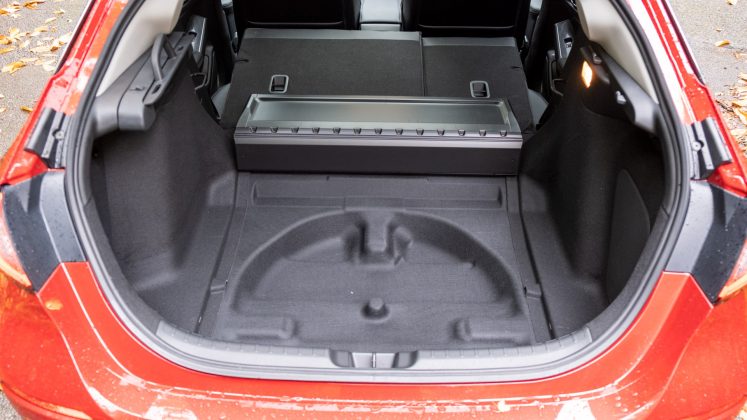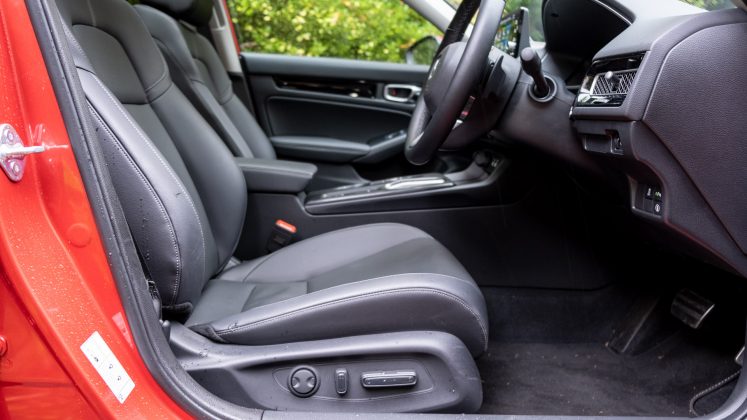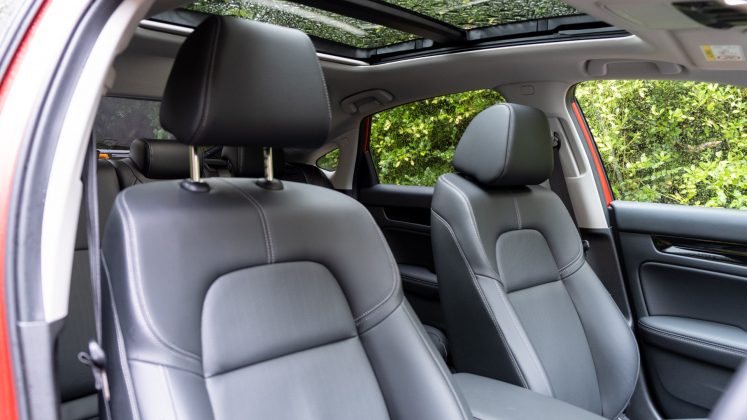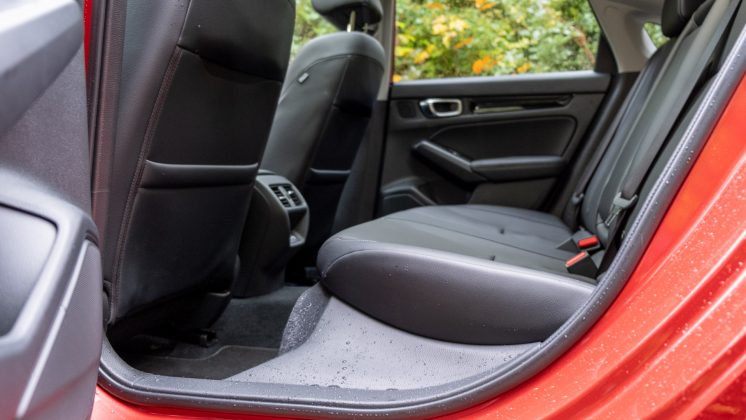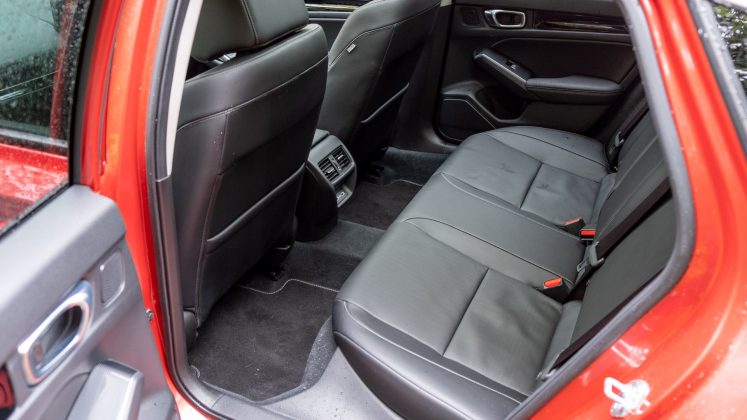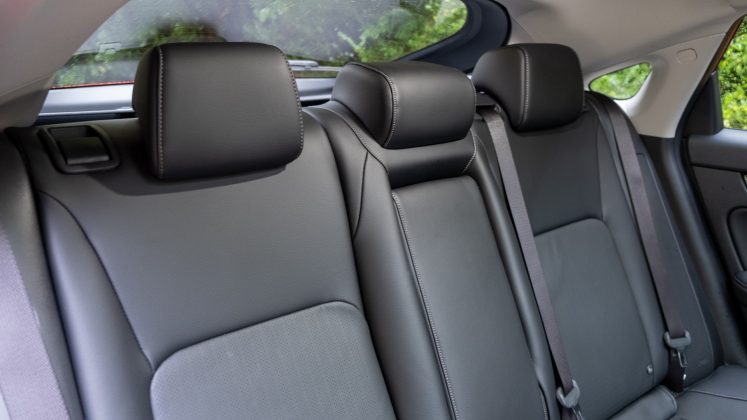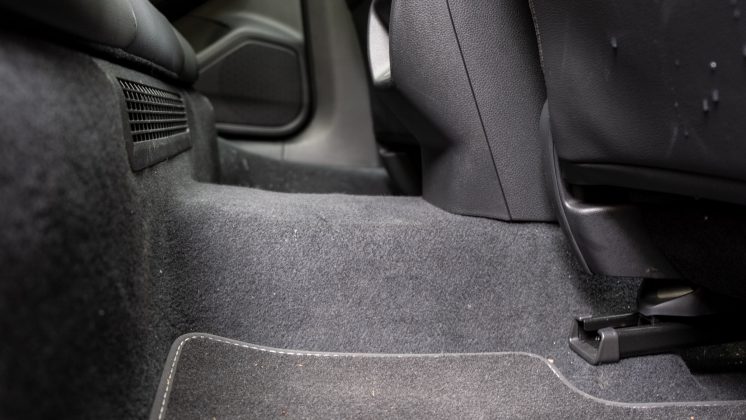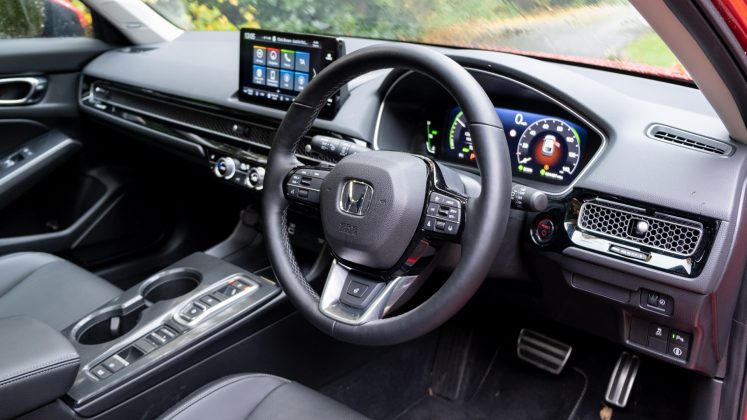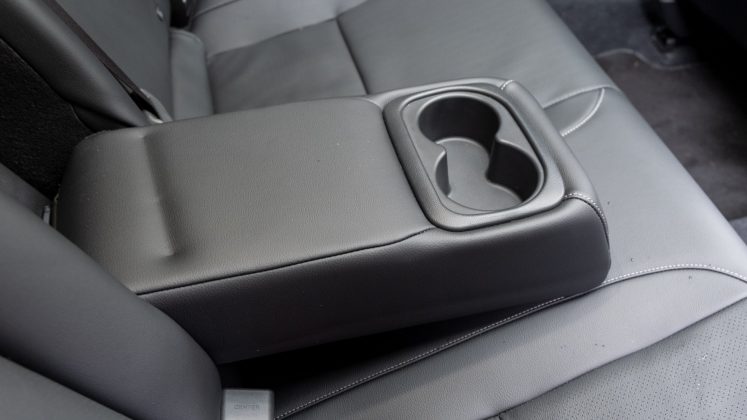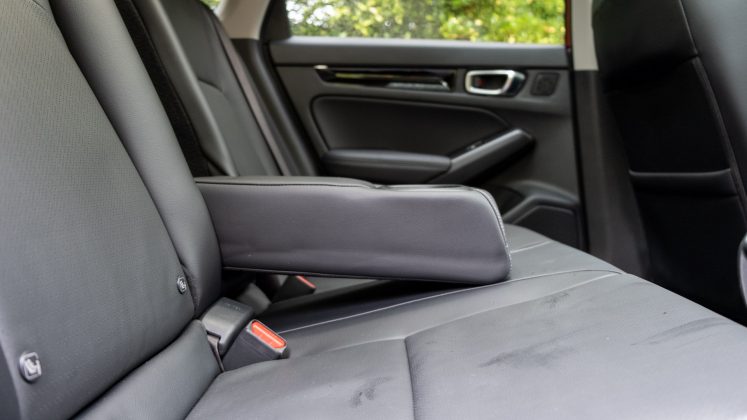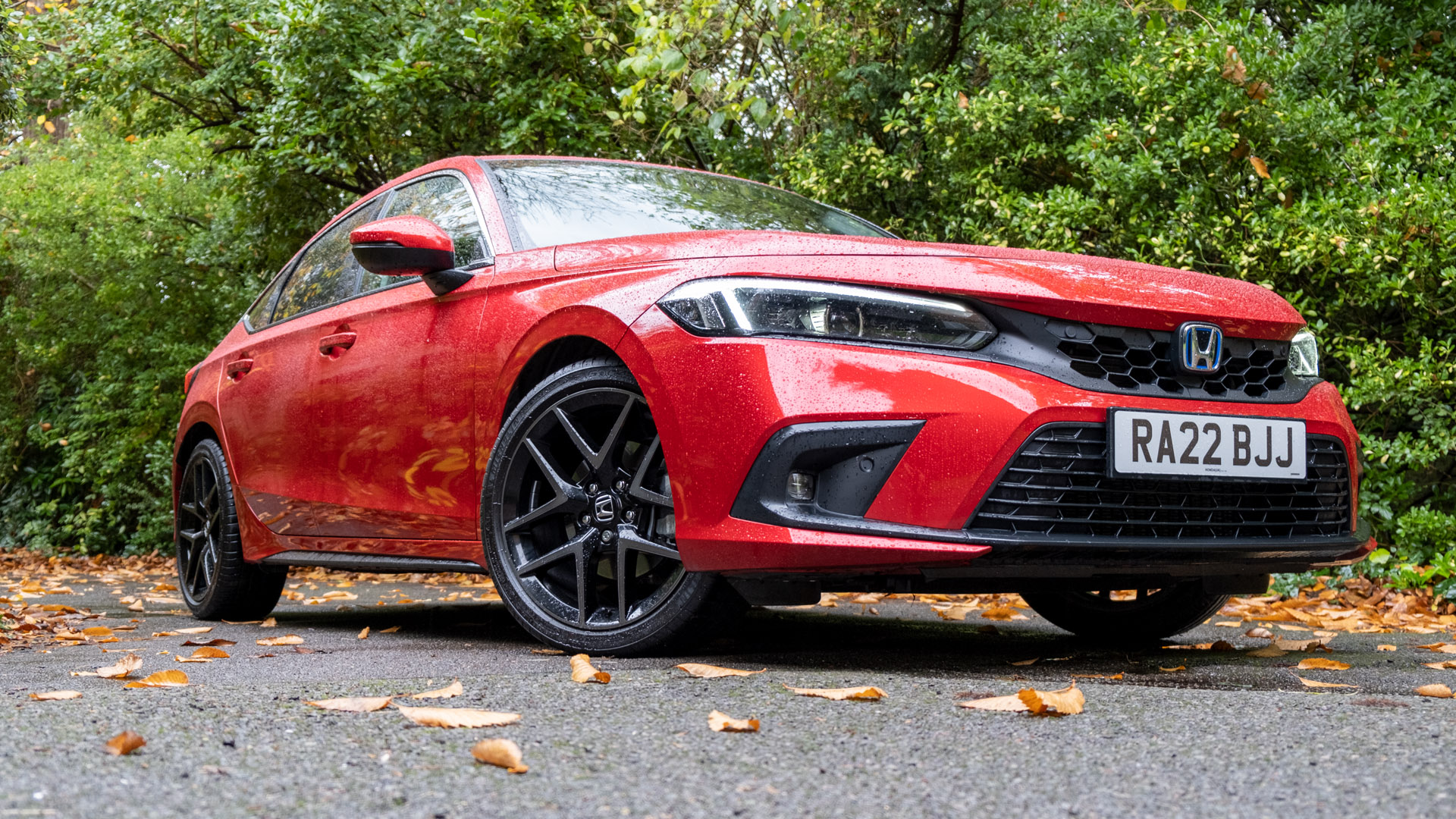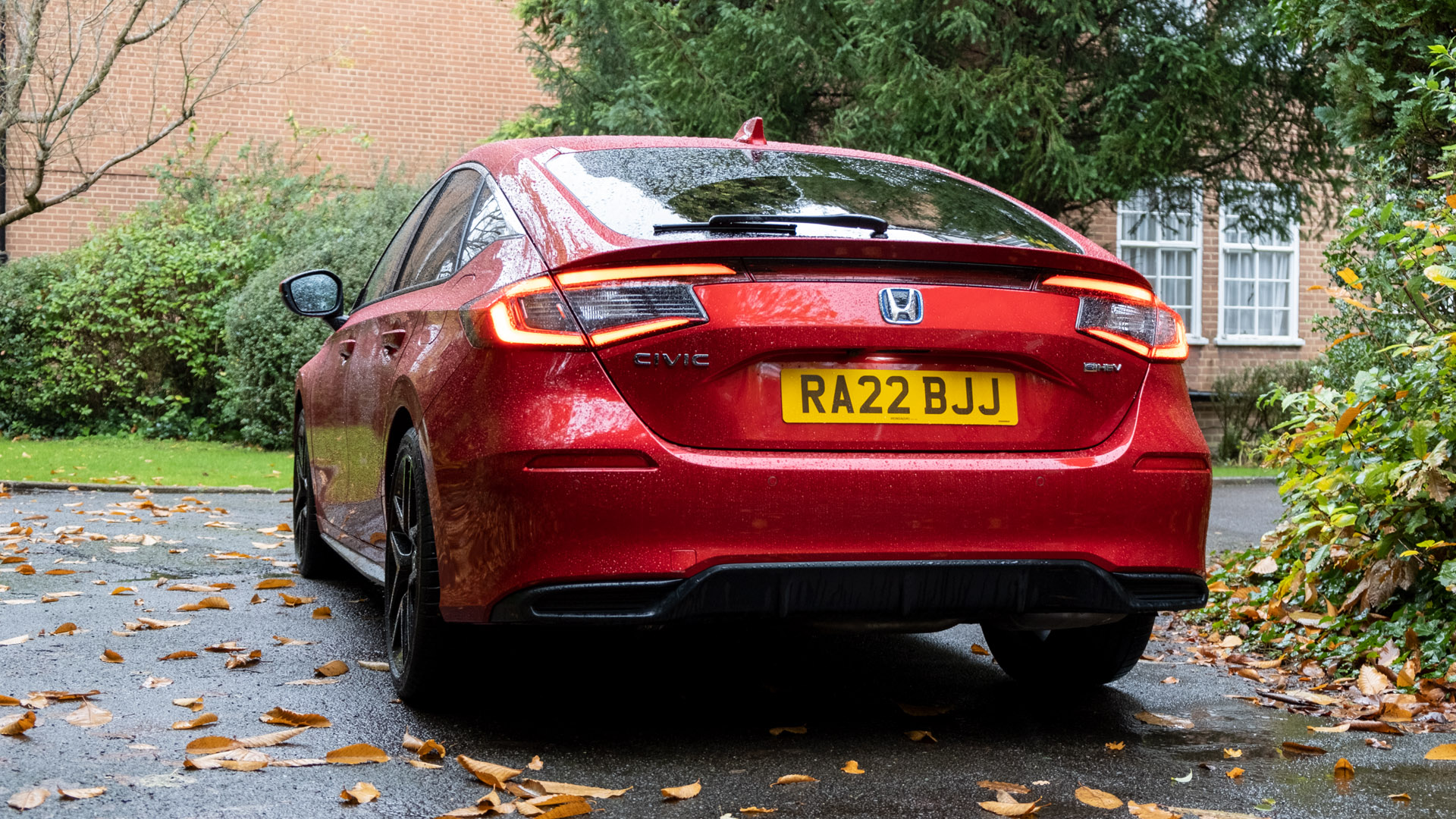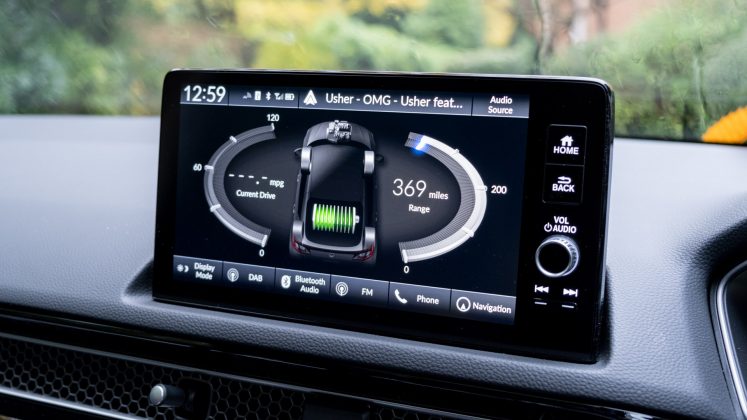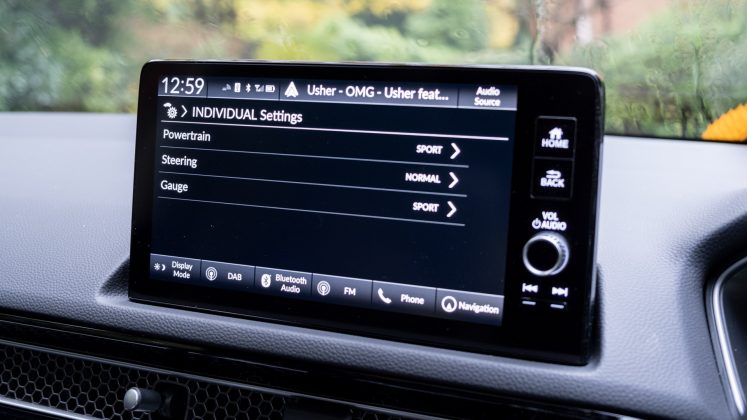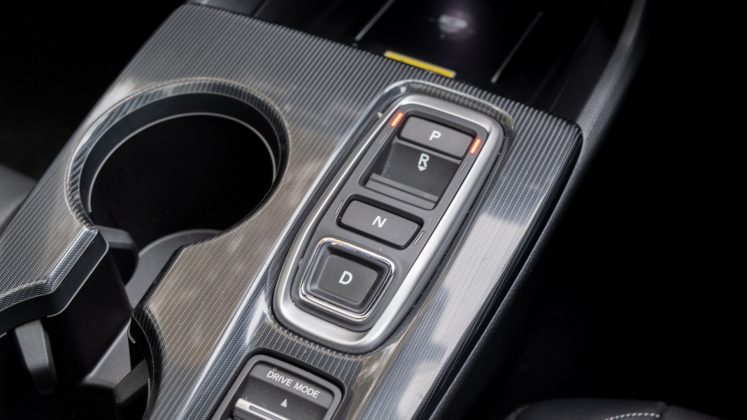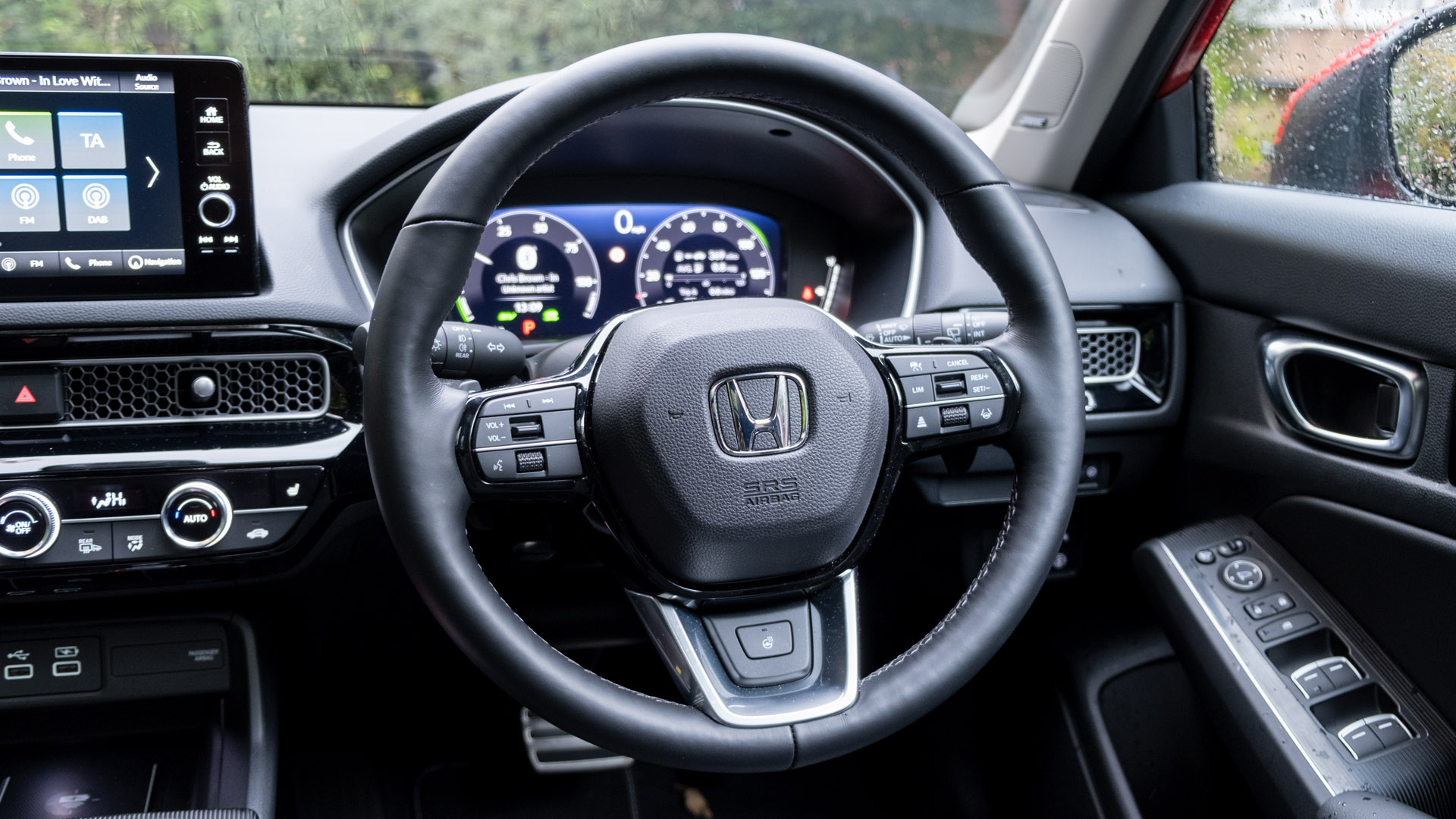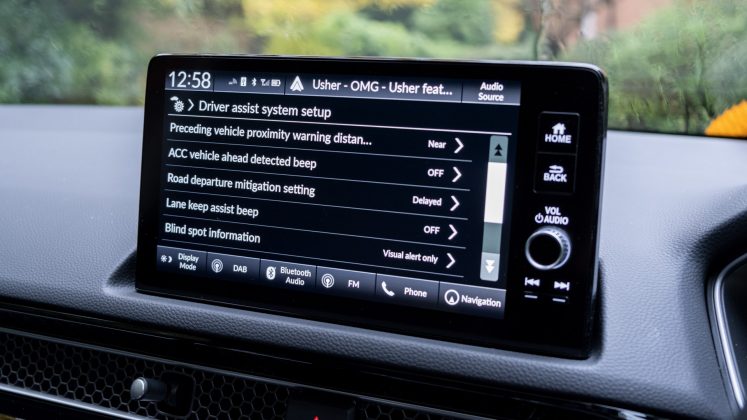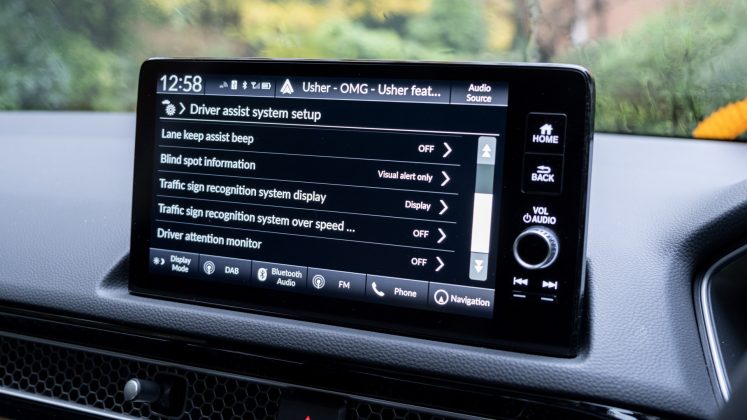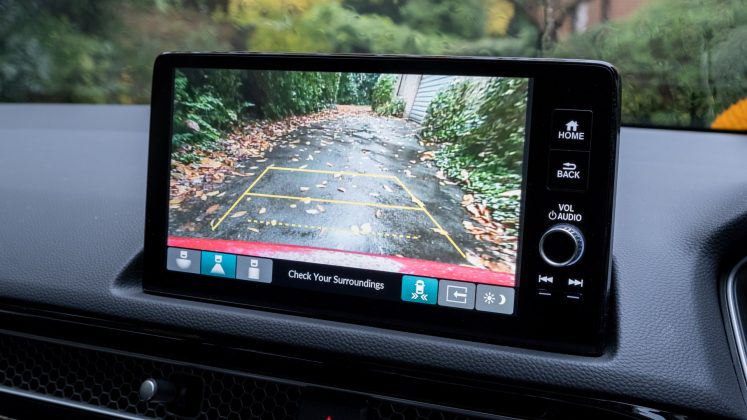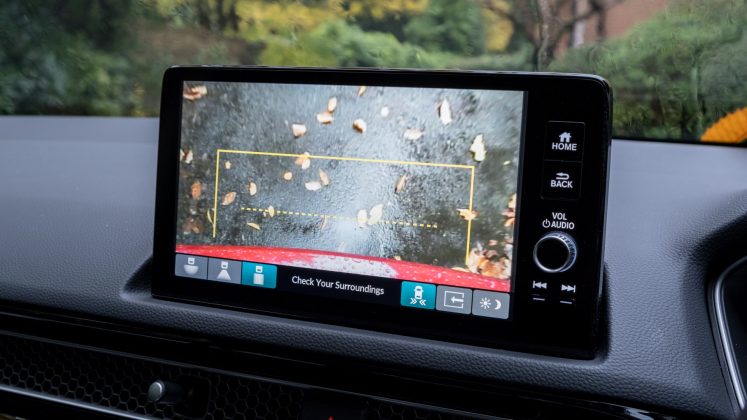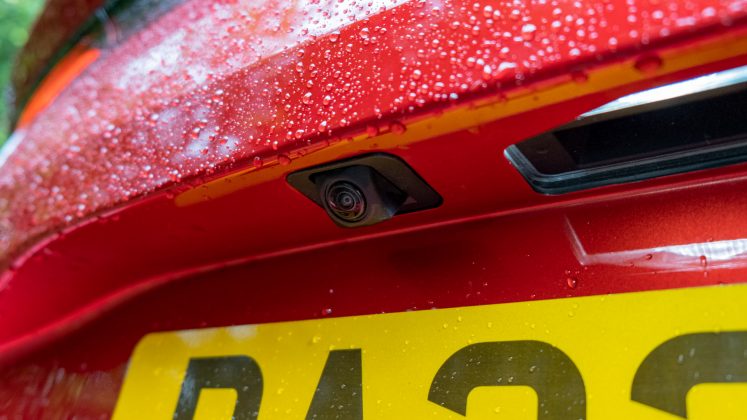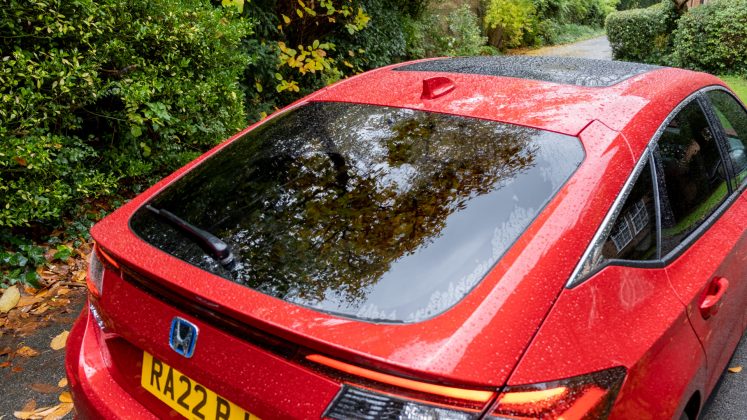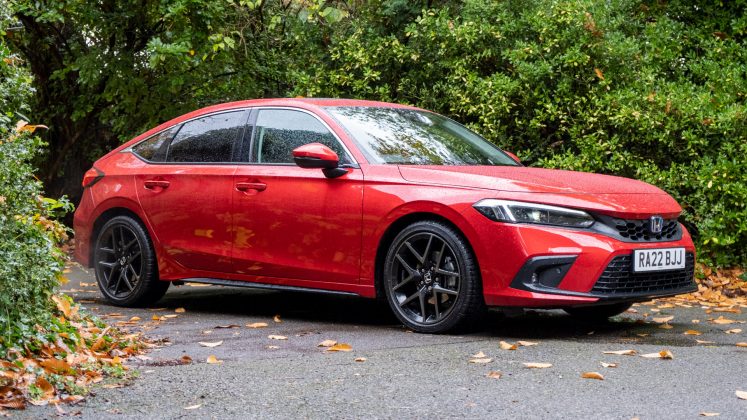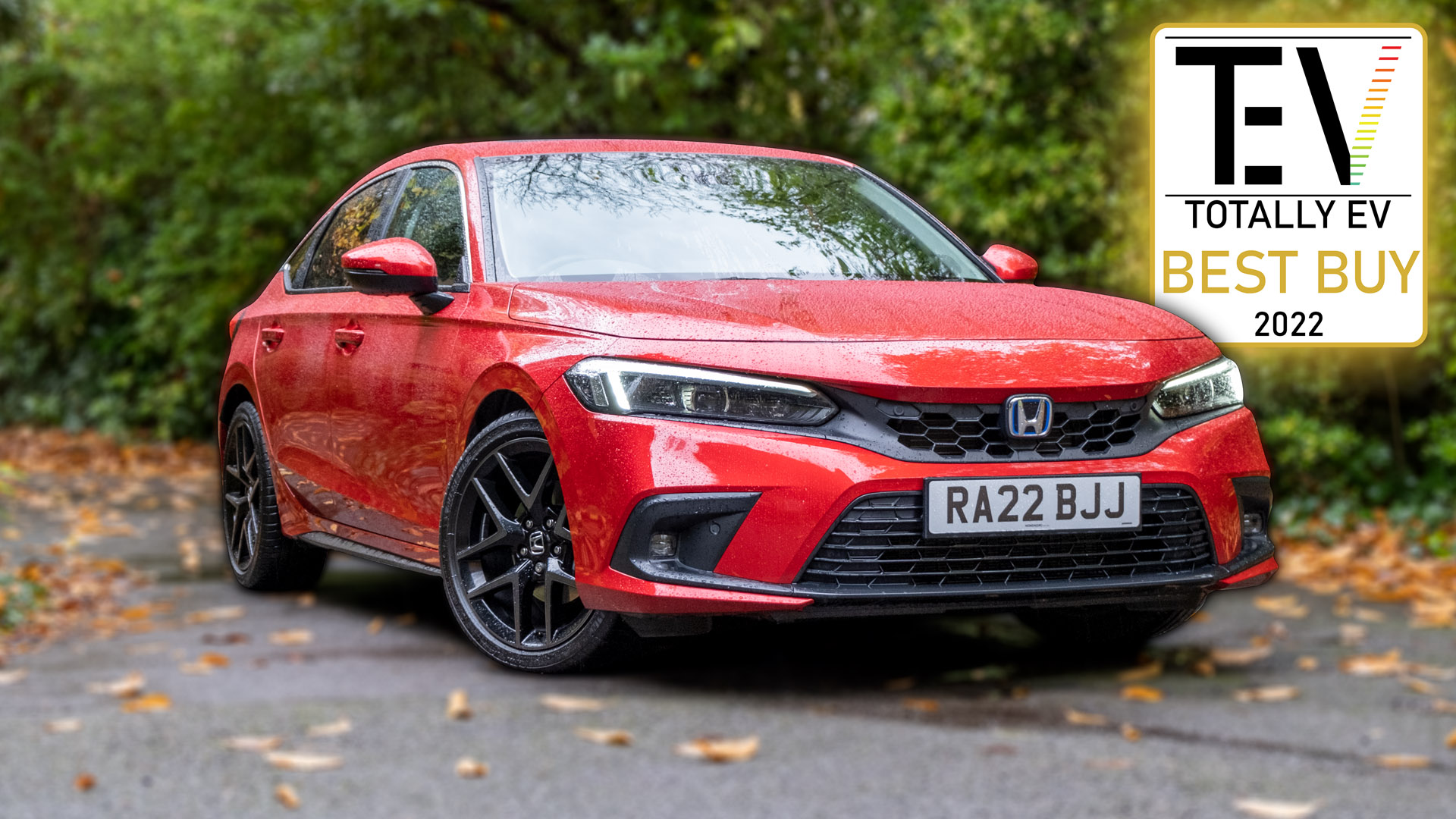The Honda Civic has been in production since 1972 and is one of the best-selling vehicles in the world with over 27 million units sold across a staggering 170 countries. Now in its eleventh generation, the hatchback exclusively uses Honda’s e:HEV powertrain, which at the writing is also present in the manufacturer’s compact Jazz, the HR-V and CR-V SUVs.
If you’d prefer to watch a review of the Honda Civic, head on over to our YouTube channel.
Honda Civic price & competition
Much like its siblings, the new Civic is competitively priced. It’s available in three trims: Elegance at £29,595, Sport at £30,595 and Advance at £32,995. The differences between the trim levels can be found below (click to expand):
Find the best Honda Civic deals
When it comes to its competitors, there are a few PHEVs to consider: the VW Golf MK8 GTE at £35,960, the Mercedes A 250 e at £32,980, the Seat Leon e-Hybrid and Audi A3 TFSIe which both start from around £32,835, and the saloon-sized Skoda Octavia iV at £33,150.
Apart from part-electrified vehicles, there are a plethora of fully electric hatchbacks and saloons, such as: the BMW i4 from £56,185; the Tesla Model 3 from £48,490; the Polestar 2 from £43,150; Cupra Born from £36,475; the VW ID.3 from £36,990; the Honda e from £36,920; the BMW i3 from £33,805; the Peugeot e-208 from £31,345; the Fiat 500 Electric from £30,645; the Renault Zoe from £29,995; Vauxhall Corsa-e from £29,035; the Mini Electric from £29,000; the Nissan Leaf from £28,995; and the MG4 EV from £25,955.
Read next: Skoda Octavia iV Estate review: An excellent hybrid estate
Honda Civic exterior review
The Civic’s exterior design is reminiscent of older-generation models but looks a bit more refined. It’s all very subjective, but we feel it’s a stylish inclusion to the market. Its frontal profile has this aggressive look due to its sloping bonnet and accentuated headlights. From the side, a privacy glass comes fitted as standard, while the alloys are dependent on the trim level you opt for – 17″ on the Elegance, and 18″ on the Sport and the pictured Advance.
At the rear, the taillights feed seamlessly with the rest of the vehicle’s design, while the fake diffuser and exhaust cut-outs add to its sporty personality. Speaking of which, if you want to up the ante, the Sports Pack adds front and rear black emblems, a ducktail spoiler, side lower decorations and door mirror covers. Similarly, there’s the Carbon Style, Nordic Silver, and Ilmenite Titanium packs to choose from too.
As for your paint options, ‘Sonic Grey Pearl’ comes as standard, while ‘Crystal Black Pearl’ and ‘Platinum White Pearl’ cost £625, and ‘Premium Crystal Blue Metallic’ and the pictured ‘Premium Crystal Red Metallic’ cost £825.
Read next: Audi A7 Sportback 55 quattro TFSI e review (2022): A sporty plug-in hybrid
Honda Civic interior review
Inside, the automaker has opted for a familiar and understated design. It has kept physical buttons by the steering wheel, centre console and dashboard, which is a relief given the nonsensical trend of rival manufacturers opting for touch-based input instead.
In terms of technology, there’s a 9″ touchscreen display at the centre of the dashboard. It’s responsive, vivid and intuitively laid out. However, it does have an aggressive matte coating, which tarnishes its look and with a lowered resolution means it isn’t as sharp as alternatives on the market. Nonetheless, over a wired connection, Apple CarPlay and Android Auto are both supported, with the former also wirelessly supported.
To use either of these third-party systems, there’s a USB Type-A port found towards the front of the centre console. Here, you’ll also find another USB Type-A port for charging and a 12V socket that can be used to power a dash cam. In the Sport and Advance trims, there’s a wireless smartphone charger, too.
Moving onto the driver’s display, there’s a part-digitalized 7″ display in the Elegance and Sport trims, while the top-spec model benefits from a fully digitalized 10.2″ instrument cluster. The larger display can be customised and also feeds turn-based navigation data from the infotainment system – this includes information from Android Auto and Apple CarPlay. Handy battery and fuel tank LED indicators can also be found on either side of the LCD display. It is unfortunate, however, that a Head-Up Display (HUD) is not offered as an option.
Elsewhere, the new Civic houses eight speakers in the Elegance and Sport trims, with the Advance model housing a 12-speaker Bose configuration. The latter system will impress most consumers, and provides superior audio reproduction thanks to the inclusion of extra speakers within the cabin and a subwoofer in the boot. If you’d like to hear how the Bose system performs, watch our detailed review on YouTube.
Honda Civic storage review
In terms of storage within the cabin, it should suffice for most. At the front, the centre console has a non-slip area at the top, two cupholders further down and a medium-sized compartment within the armrest. The glove box is unfortunately a little limited but will store away a few valuables from prying eyes. In the Advance trim level, there’s also a sunglass box and a sunroof with an electronically-controlled sunshade – a great addition, as it draws in light within the cabin when needed.
As for the door bins, they’ll easily accommodate a small-sized purse or wallet. At the front, there’s also an area for a 500ml water bottle, but regularly accessing it will require a certain technique due to the design of the overarching armrest. A particular problem if you have a solid, reusable bottle.
Buy a car phone mount on Amazon (Affiliate)
Should you want to transport larger goods, there’s the boot. Here, you’ll find 409 litres with the seats in place and 1,187 litres with them folded down. Note, there’s 404 litres in the Advance trim due to the inclusion of a subwoofer. By comparison, the Civic offers more storage space than smaller hatchbacks, such as the Seat Leon e-Hybrid and Audi A3 TFSI e at 280/1,110 litres, the Honda Jazz at 304/1,205 litres and even the Honda HR-V SUV at 320/1,290 litres, but cannot compete with the likes of the Skoda Octavia iV Estate and Citroen C5 X that provide more storage with 490/1,555 litres and 485/1,580 litres, respectively.
In terms of practicality, the Civic has a hatchback design that allows taller individuals to access the rear of the boot without discomfort. Similarly, if one were to drop the rear seats, they fall down without interfering with the rear seatbelts. There’s a near-flat loading bay, 60:40 rear-split folding seats and a small underfloor compartment. As for the boot load cover, it’s ingeniously designed and can even be removed altogether.
Unfortunately, there are no through-loading capabilities with the omission of a ski-latch and a rear tailgate that can only be operated manually. On that note, the cut-outs within the boot compartment are rather small and carved out of plastic, which makes the tailgate a little tricky to close if you have elongated or wet fingers.
Read next: New Honda HR-V review: Best hybrid SUV?
Honda Civic comfort review
Closing the Civic’s boot might lead to a frustrating experience for some, however, within the cabin, it’s supremely comfortable. The seats are accommodating and provide excellent support for longer drives. You’ll find black fabric in the Elegance, part-leather and fabric in the Sport and full leather in the Advance trim.
Onto controls, the driver’s seat is electronically adjustable and has lumbar support, while both of the front seats are heated as standard across all trim levels. In the Advance trim, the passenger seat also benefits from electronic controls, while the steering wheel becomes heated too.
Read next: Our favourite power banks for long journeys
This brings us to headroom and legroom, whereby at the front of the cabin it’s a non-issue, especially with those seating controls. At the rear, however, it’s a lot more limited; 6-foot 2-inch (188cm) individuals will feel constrained for headroom resulting in them having to slouch to avoid their heads touching the roof lining. It’s even more limited for the middle occupant, especially due to the raised transmission tunnel chomping away at legroom. Thankfully, there’s enough space for the rear outer occupants to stretch their legs.
On the subject of the rear middle seat, if it’s vacant, the rear occupants can drop the armrest to reveal two cupholders. However, the armrest itself doesn’t have a stop mechanism, which means it simply flops down and lies on the seat – it feels rather cheap and not well-optimised.
Another area of disappointment is the vehicle’s cabin insulation. There’s a fair bit of noise that creeps in at lower speeds, especially given one can hear the 2-litre petrol engine trickling away at the front of the cabin. Oddly, however, road noise isn’t too bad at higher speeds and is in line with its competitors on the motorway.
Read next: Tesla Model 3 review: Should you buy into the hype?
Honda Civic performance review
This brings us to performance, where its hybrid powertrain outputs 135 kW (181 hp) of power and 315 Nm of torque. We had it tested from 0-60mph in 7.17 seconds using Racelogic’s Vbox Sport, while its top speed is limited to 112mph. Indeed, the Civic e:HEV isn’t too shabby off the line and provides similar straight-line performance of other hybrids.
However, what stands out are the vehicle’s driving dynamics. The steering wheel feels connected, providing a heightened driver’s feel, especially in its Sport mode preset that tightens up the response. The Civic doesn’t suffer from any body roll either and grips the road exquisitely well despite operating on a front-wheel drive (FWD) system; we didn’t experience torque steer or any front-wheel spin.
Better still, the vehicle’s suspension setup is tuned to perfection. It soaks up anomalies, speed bumps and potholes whilst also being adept on windy country roads. It’s great to see that Honda has retained its DNA in the new Civic; it’s plenty of fun to drive and will leave a lot of consumers with a smile on their faces.
There is also some clever trickery going on with the vehicle’s hybrid system. The Civic uses a Continuously Variable Transmission (e-CVT) system, which gives the sensation of “shifting through the gears”, but in fact operates on a singular system; there are even fake gear shift noises that can be heard via the speaker system, with the noises ramping up in Sport mode. Despite the manufacturer’s label of having a CVT gearbox, there’s none present.
Indeed, the engine itself ramps up when power is required or will stay at a higher RPM in Sport mode for a bettered throttle response. According to Honda: “the clutch system can engage to provide a single-speed direct drive from the ICE when required at higher speeds”.
On that note, if instant power is required and the engine is running at lower speeds or is not in use due to being in pure EV mode, you’ll find that there’s a bit of a delay when a simulated ‘kick-down’ is initiated. It’s nothing to worry about in an overtaking manoeuvre but might leave some enthusiasts a little disappointed.
Find the best Honda Civic deals
This leads us to the transition between the two methods of power delivery. The e:HEV platform is quite unique, as it uses both pure EV power and pure petrol power to drive the front wheels. When traversing at lower speeds, the front-mounted 2-litre petrol engine acts as a generator that charges the 1.05 kWh battery pack. This, in turn, powers two electric motors which then drive the front-wheel drive system. This gives you the sensation of driving a fully electrified vehicle in and around town. As soon as you require more power, drive at faster speeds or have a fully depleted battery, the engine uses a clutch system to engage itself directly to the front wheels – as there’s no gearbox, the speed of the engine is synchronised with the wheels at a 1:1 ratio. A visualisation of the shift in power modes can be seen on Honda’s YouTube channel.
All of this might explain why the vehicle is a little slower to respond to instant power delivery, however, it’s otherwise buttery smooth when transitioning between the two power modes – one can’t feel the difference and Honda should be commended for the excellent integration of its i-MMD (intelligent Multi Mode Drive) system.
All this wizardry is certainly riveting, but it’s ultimately done to maximise fuel efficiency. From our own mixed driving tests, we netted 55 MPG, which is a similar figure to the Honda Jazz and HR-V that we previously reviewed. It’s also identical to a few of its PHEV rivals, such as the Seat Leon e-Hybrid, Audi A3 TFSI e and Skoda Octavia iV Estate. However, the Civic isn’t as impressive as the Volkswagen Passat Estate GTE which achieved 60-65 MPG and the Citroen C5 X which netted a class-leading 74.2 MPG. As for the total range, the Honda has a 40-litre fuel tank that’ll net between 350-400 miles.
It is worth pointing out, however, that in town the Civic will be able to achieve north of 60-65 MPG, while solely driving on the motorway 45-50 MPG. The latter figure is quite impressive and far outclasses its rivals that fall short on longer drives. Here, the e:HEV platform is a better bet for those regularly doing longer distances (such as 100-mile trips), while a PHEV is a better choice if you have access to a charge point and frequently do shorter runs – this is because most of its PHEV rivals have a pure EV range of 30-35 miles, thus bolstering their MPG figure.
Much like its rivals, the Civic also uses regenerative braking to reattain energy back into the small battery pack. This is done automatically, though, one can customise the level through the use of the flappy paddles found behind the steering wheel. While these are intuitive to use and provide a degree of deceleration, the harshest mode still can’t replicate a one-pedal driving experience as you’d find in a pure electric vehicle.
Furthermore, in Normal and Eco modes, the regen levels reset each time you put your foot on the accelerator pedal. There’s no means of saving your last-used mode nor for the vehicle to permanently adapt its driving style, which in our opinion is a missed opportunity. According to Honda, “this is to enable more efficient coasting which maximises mpg”. However, “in Sport mode, the regen mode doesn’t reset. So, if you set it to maximum, it will stay there. This is to maximise the energy recovery to ensure the batteries have as much charge as possible, for a sportier drive.”
Read next: Citroen C5 X review: Hybrid perfection?
Honda Civic safety review
Moving onto safety, the new Civic scored 5/5 stars in Euro NCAP’s rigorous crash tests; it managed an impressive 89% and 87% in its Adult Occupancy and Child Occupancy tests, respectively, and 83% in the Safety Assist tests.
Indeed, its advanced driver-assistance systems (ADAS) are impressive. As standard, all trim levels are fitted with the following: Blind Spot Information with Cross Traffic Monitor, Brake Assist, Collision Mitigation Braking System, Forward Collision Warning, Adjustable and Intelligent Speed limiter, Lane Departure Warning, Lane Keeping Assist System, Road Departure Mitigation, Traffic Jam Assist, Traffic Sign Recognition System, and Adaptive Cruise Control with Steering Assist.
In our tests, we found its ADAS worked faultlessly. ACC keeps you at a safe distance from the leading vehicle and provides a buttery smooth transition when changing speed. Better still, the steering support is phenomenal even at higher speeds and on tighter bends. If you frequent the motorway, you’ll thoroughly appreciate the systems that Honda has included as standard.
Speaking of which, there’s also a High Beam Support System, but in the Advance trim, it goes one further with Adaptive Driving Beam. This reduces unwelcome glare by using the onboard camera to detect vehicles in front and automatically switches the headlights’ individual LEDs on and off to provide the most suitable spread of light. It’s super responsive and makes for a safer drive for all motorists.
When it comes to visibility, it’s faultless. The A-pillars are slender and have a cut-out to aid with cornering; the front, side and rearview windows are plenty large with the latter also featuring a wiper, which doesn’t cover a large radius but will suffice in bettering rear visibility. As for parking, front and rear sensors, and a rearview camera all come fitted as standard, although the resolution of the camera is sub-par. The Civic’s turning circle is rated at 11.6 metres, which means tighter parking manoeuvres shouldn’t be an issue.
Read next: MG4 EV review: The best value EV to date
TotallyEV’s verdict on the new Honda Civic
If you can afford it, the Honda Civic e:HEV is an excellent hatchback. It’s stylish, has a practical interior design, has excellent driving dynamics and comfort, has a plethora of driver assistance systems fitted as standard, and is pretty fuel efficient too. It’s our top pick for those who don’t have access to a charge point but yet want to better fuel economy. As a result, it receives our Best Buy award.
Find the best Honda Civic deals
If you do have the means of regularly charging and predominantly do shorter runs, it’s worth considering the Citroen C5 X, the Skoda Octavia iV, the Volkswagen Passat Estate GTE, the Audi A3 TFSI e, and the Seat Leon e-Hybrid. Should 200-250 miles of realistic mileage on a single charge not give you range anxiety, there are a few fully electric vehicles to consider: the MG4 EV, the Cupra Born, the VW ID.3, the Renault Zoe and the Nissan Leaf – all of which are competitively priced and ones we’d actively recommend.
What do you make of the Honda Civic? Let us know in the comments section below or via social media; we’re on: YouTube, Instagram, Facebook, Twitter and LinkedIn.

